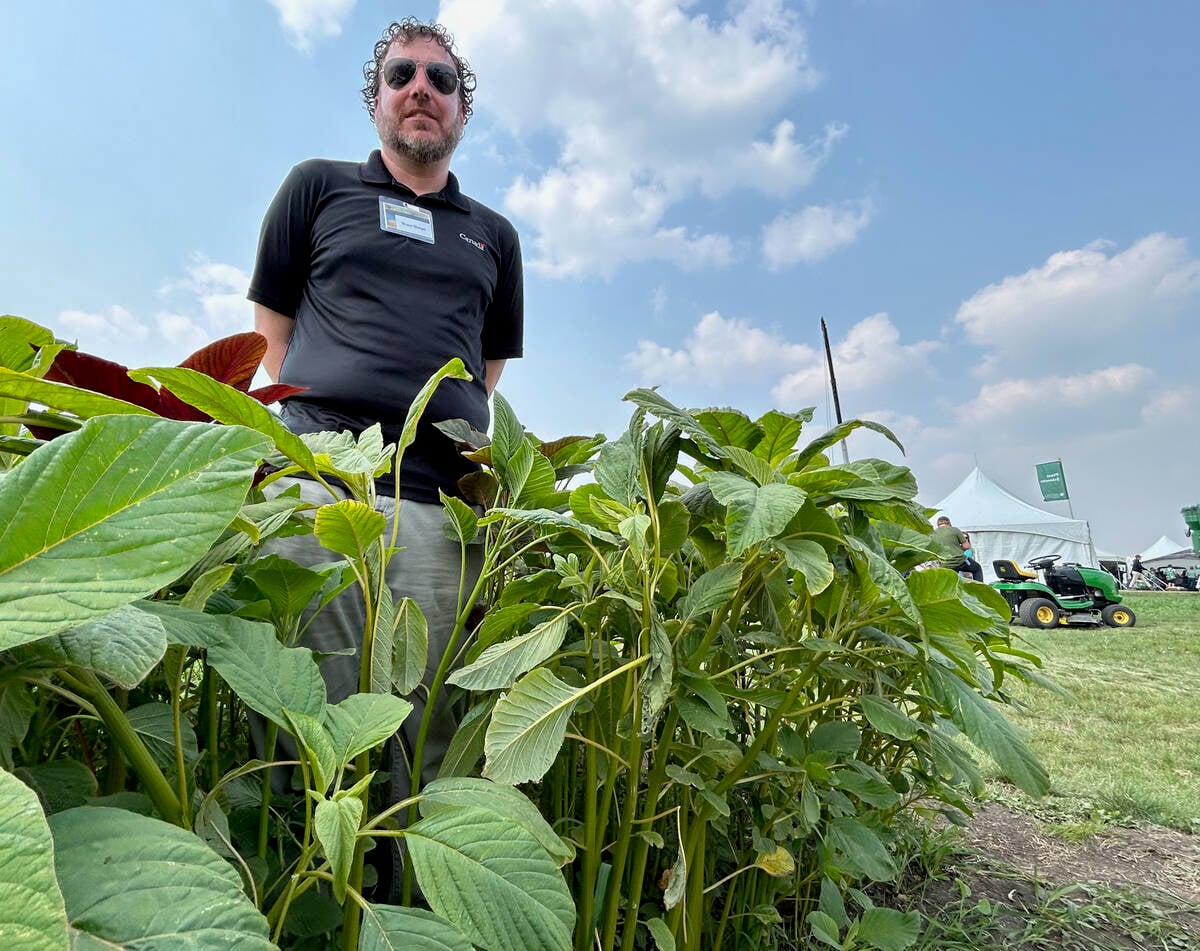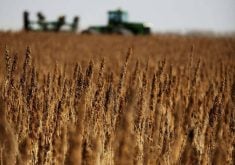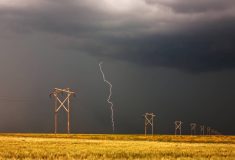In my last article, I discussed concerns of herbicide residue carry-over after a season of drought. In this article, I will discuss the importance of soil testing for plant-available nutrients after a drier-than-normal growing season.
Many farmers in the southern Prairies had below normal growing season rainfall, while some had almost no rain. The result was below normal crop yields to almost total crop failure in some areas. Lower crop yields mean crop nutrient uptake from soil was lower than in typical years. This brings to mind important questions:
1. How will drier moisture conditions this season affect soil nutrient carry-over to the next growing season in your fields for nitrogen, phosphorus, potassium and sulphur, or even micronutrients?
2. How will nutrient carry-over affect fertilizer recommendations for various crops in your fields next year?
Read Also

Glufosinate-resistant waterhemp appears in U.S. Midwest
News of glufosinate-resistant kochia in the U.S. is concerning as farmers are losing options to control waterhemp, also of the pigweed family.
Soil testing
The starting point to determine nutrient carry-over is to ensure proper soil sampling and testing of each of your fields for accurate nutrient assessment. As the old saying goes, “You can’t manage what you don’t measure!”
I always encourage farmers to ride along with the person soil sampling their fields. It is a great learning opportunity to see the varying depths of your topsoil, what your subsoils look like and how your soils vary across the landscape. Plus, you know your fields and variability better than anyone else.
For soil sampling depths, I prefer sampling the zero- to 15-, 15- to 30- and 30- to 60-centimetre depths (zero to six, six to 12 and 12 to 24 inches) to determine the amounts of nitrate-nitrogen (NO3-N) and sulphate-sulphur (SO4-S) at the various depths. However, some agronomists only sample zero- to 15- and 15- to 60-centimetre depths (zero to six and six to 24 inches) as it is simpler and faster, but it gives less precise depth information.
It is almost impossible to sample to 60 centimetres in dry soil with a hand probe! Using a hand auger is possible but challenging, and can be very difficult to accurately collect precise depth samples when the soil is dry and loosened by the auger. Using a truck-mounted soil probe is the best way to collect dry soil cores. It may be necessary to use a slightly narrower core tip to hold the soil core in the sampling tube when lifting it out of the soil.
Be sure to take at least 25 soil cores per uniform field. If fields are variable and you use variable fertilizer rates in uniquely different soil/crop management zones, ensure that at least 20 cores are taken from each management zone for representative sampling. Be sure that the soil samples from your fields are analyzed by a laboratory that uses the recommended analyses by your provincial department of agriculture.
When your fields are sampled, it is wise to take the time to core down to a full metre (40 inches) at selected locations in each field to see what your soil moisture conditions are like going into winter. Is the soil profile completely dry down to 100 centimetres (40 inches)? Is there moisture present in the soil below 60 or 70 centimetres? It’s not unusual to see moist soil below about 60 centimetres (24 inches) in fields that were seeded to peas or other shallower-rooted crops. Going into winter, it is good to know just how much reserve soil moisture you have in each of your fields for planning purposes next year.

Effects of drought in soil analysis results
Nitrogen (N) is often the nutrient of greatest interest, as it is applied in the highest amounts to crops such as cereal and oilseed crops. Nitrogen fertilizer uptake by crops will be reduced in a dry year. Earlier in the season, when soils were warm with some moisture, some mineralization of organic matter may have released some plant-available nitrate-nitrogen (NO3-N). However, mineralization would have been lower than typical due to poorer soil moisture conditions.
In a dry year, it is very unlikely that N was lost from soil due to denitrification, as ample soil moisture is needed for losses to occur. So, if average rates of N fertilizer were applied last spring, coupled with some N mineralization of organic matter, and crop uptake of N was low from soil due to drought conditions, odds are residual nitrate-N carry-over will be higher than typical years.
Knowing the amounts of N carry-over are very important for fertilizer planning next spring. Careful soil sampling and analysis of your fields will give you these answers, to assist in optimizing N fertilizer planning.
Generally, soil phosphorus (P) levels will either remain about the same as the previous year or might increase slightly. Phosphate fertilizer is applied as P2O5 and soil phosphorus is determined as P. To convert from P2O5/acre to P/acre, multiply by 0.43. So, if 25 pounds of P2O5/acre was applied to a field last spring, multiplied by 0.43, then about 11 pounds of P/acre was applied. With some crop uptake of soil P and applied P fertilizer, only a slight increase in soil test P would be expected. Normally, I would expect soil test P to remain about the same or increase very slightly after a dry season.
Drought-affected fields with low grain yields will have lower potassium (K) uptake versus typical years. It is important to remember only about 20 per cent of the K taken up is contained in the seed of most cereal and oilseed crops.
However, fields cut as greenfeed will have higher K removal when all crop residue is removed. A soil K test measures the available and exchangeable levels of K in soil. Soil test K levels normally do not change much from year to year in medium- to fine-textured soils. This is due to the fact that clay minerals contain K in the interlayers and K is released from clay minerals, due to weathering and wetting and drying, to maintain soil K levels.
After a drought year, soil K levels may decline slightly as the positively charged K ions may become more tightly held on the surface and interlays of clay and are not extracted by the K soil test. However, when dry soils become moist, the soil K levels tend to return to an equilibrium. When your soil test K level is greater than 300 pounds of K/acre in the top zero- to 15-centimetre soil depth (zero to six inches), this is above the critical level for needing K fertilizer for most crops grown in Western Canada.
Generally, mineralization of sulphate-sulphur (SO4-S) from soil organic matter can provide significant amounts of sulphur (S) for plant uptake in a healthy soil. When precipitation is lacking, drier soil conditions result in lower mineralization of sulphate-S, but there would be lower crop uptake of S as well.
In fields with variable topography and more variable moisture conditions, there will be differences in S mineralization in different soil/crop management zones. If a sulphate form of fertilizer was used last spring, there is an increased chance of seeing slightly higher soil S levels. But, if elemental S fertilizer was used, oxidation of elemental S would be limited and an increase in soil test S is unlikely. Soil sampling and testing is the only reliable way to know what your residual S levels are at different soil depths and in different soil/crop management zones in a field.
Soil pH can vary by up to a half unit over a growing season. Typically, after a very dry year, soil pH can decline by up to a half unit, particularly in soils that have a pH of less than 7.0. This variance is to be expected after a season of drought. I am not overly concerned with slight variation in soil pH. However, as soil pH drops to 5.5 or less, I become increasing concerned. If you have surface soil pH levels less than 5.5, monitor closely and discuss your concerns and management options with an agronomist with excellent soil science training.
Fertilizer planning for next year
Once you have all soil test results and information, review the nitrate-N soil test results first, for all fields. Ideally, for fields with the highest soil test N levels, consider growing your highest N-requiring crops such as spring wheat or canola. For your fields with the lowest soil N levels, consider growing N-fixing crops such as pea, lentil or fababean. Try not to grow pulse crops on fields with higher N levels to make the best use of the N-fixing ability of your pulse crops. While doing this crop planning, keep in mind using good crop rotation practices to minimize disease and to rotate herbicide groups on your fields.
When deciding on N fertilizer rates, consider both the soil test N level to 60 centimetres (24 inches), the stored soil moisture you expect to have in the spring, coupled with your expected average growing season precipitation. Then select realistic target crop yields. Some regions of the southern Prairies will have limited stored soil moisture going into winter, so it might be wise to fertilize for lower-target-yielding crops next spring, if stored moisture is low next spring. If soil moisture conditions improve after seeding next spring, top dressing additional N fertilizer is an option to consider.
For P, K and S for each field, review your soil test levels to determine if each nutrient is:
- Deficient — when an essential element is at a low concentration that severely limits yield.
- Insufficient — when the level of an essential element is below that required for optimum yield.
- Sufficient — when the concentration of an essential nutrient is present in adequate amounts for optimum growth.
Then, review the fertilizer recommendations provided by the soil test laboratory. In addition, review the fertilizer recommendation tables for various crops from your provincial department of agriculture (check the website for your provincial agriculture department — Alberta Agriculture publication examples are listed below), and consult with a knowledgeable 4R crop adviser to develop sound, economical fertilizer plans for each crop and field. It is always wise to get several opinions when developing your fertilizer plans.
Examples of Alberta Agriculture fertilizer information with recommendation tables can be found online.
Phosphorus Fertilizer Application in Crop Production can be found at https://www1.agric.gov.ab.ca/$department/deptdocs.nsf/all/agdex920/$file/542-3.pdf?OpenElement. Potassium Fertilizer Application in Crop Production can be found at https://www1.agric.gov.ab.ca/$department/deptdocs.nsf/all/agdex917/$file/542-9.pdf?OpenElement. Sulphur Fertilizer Application in Crop Production can be found at https://www1.agric.gov.ab.ca/$department/deptdocs.nsf/all/agdex3526/$file/542-10.pdf?OpenElement. Micronutrient Requirements of Crops can be found at https://open.alberta.ca/dataset/917e7e5a-6c46-49d9-bee6-61dc73083549/resource/60e95a13-86b7-41cd-b68c-403f29f12677/download/1992-531-1.pdf.
Soil test this fall
Soil testing is very affordable. If done correctly, the results tell a farm manager the levels of nutrients in each field, which then allows for wise, economic planning of fertilizer inputs needed for each crop, in each field. So, make sure to soil test this fall to develop wise fertilizer plans for next spring.
















